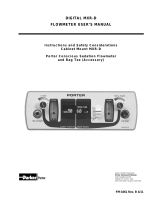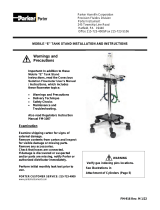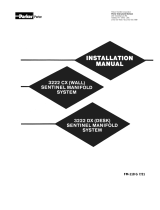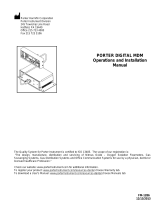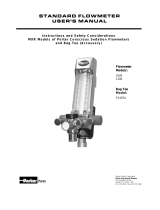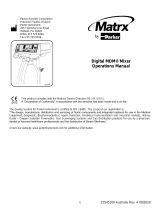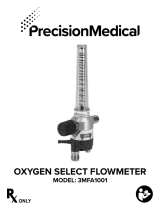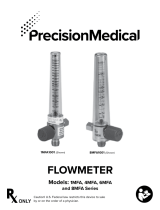
SAFETY:
ADA Guidelines: In addition to the fail-safe
and other safety features found on most
sedation machines, effective August 1976, the
following specifications were added to those
required for acceptance by the ADA Council on
Dental Materials and Devices: 1. Emergency
Air Valve; 2. Non-rebreathing Check Valve;
and 3. Resuscitator Quick Connect.
In addition, the ADA Council requires that: 1.
the gas storage and delivery system meet the
recommendations of the National Fire
Protection Association (NFPA); 2. The system
be installed by a competent supplier of gases
and equipment.
NFPA Codes: To assure safe operation and
conformation to local fire codes, Porter
Instrument Nitrous Oxide Sedation Systems
meet or exceed the guidelines established by
the National Fire Protection Association for
Nonflammable Medical Gas Systems, NFPA
99. Copies of NFPA 99 or portions thereof
may be obtained by writing to National Fire
Protection Association, Batterymarch Park,
Quincy, MA 02269-9904 USA or call: 1-800-
344-3555
INTENDED USE:
Flowmeter for Analgesia
Delivery System
This device is intended for patient use by an
attending physician or dentist properly trained
in its use. Porter Instrument recommends the
user be thoroughly familiar with the use of
Nitrous Oxide - Oxygen Conscious Sedation
for patient analgesia and be properly trained in
its administration prior to using this product.
For training requirements on the administration
of Nitrous Oxide - Oxygen Conscious
Sedation, contact the appropriate regulatory
authority in your country, state, or province.
Training is recommended to provide a
practical, hands-on capability and an
understanding of the behavioral aspects of
Nitrous Oxide Sedation and will complement
the safety features of this device.
USE SCAVENGING
Monitor for N2O in the operatory to insure that
controls are effective in achieving low levels
of ppm (parts per million) exposure. Contact
your Porter dealer for details on monitors and
testing.
GAS SUPPLY CONNECTION
After installation of the flowmeter, connect the
nitrous oxide and oxide supply lines to the
Diameter Indexed Safety System (DISS)
fittings located on the back of the flowmeter
unit. It is important that the regulators for
both gases be set to give pressures in the
range of 50 PSIG ±2 PSIG.
Confirm the absence of leaks at pressure
connections on the unit. Bubbles will appear
at leaking locations when a soap / water
solution is used. This procedure is
recommended each time a cylinder is
changed.
MONTHLY LEAK CHECK (or if
connections to flowmeter are disconnected
and then reconnected, such as after a
flowmeter service at the factory or if the
DISS/DISS hose is replaced): Leak test the
flowmeter system for working pressure leaks.
After all hose connections are tightened, turn
the flow control knobs to the off position and
the on/off switch to the off position. Confirm
that the DISS Shut-Off Valves are in the open
position. Pressurize the sedation gas supply
lines with 50 PSI. Observe any pressure
decay after an overnight time period (5 PSI
drop allowed).
Monitor O2 gas pressures at the beginning of
each procedure to assure sufficient gas
remains in the tank to complete the
procedure.



















